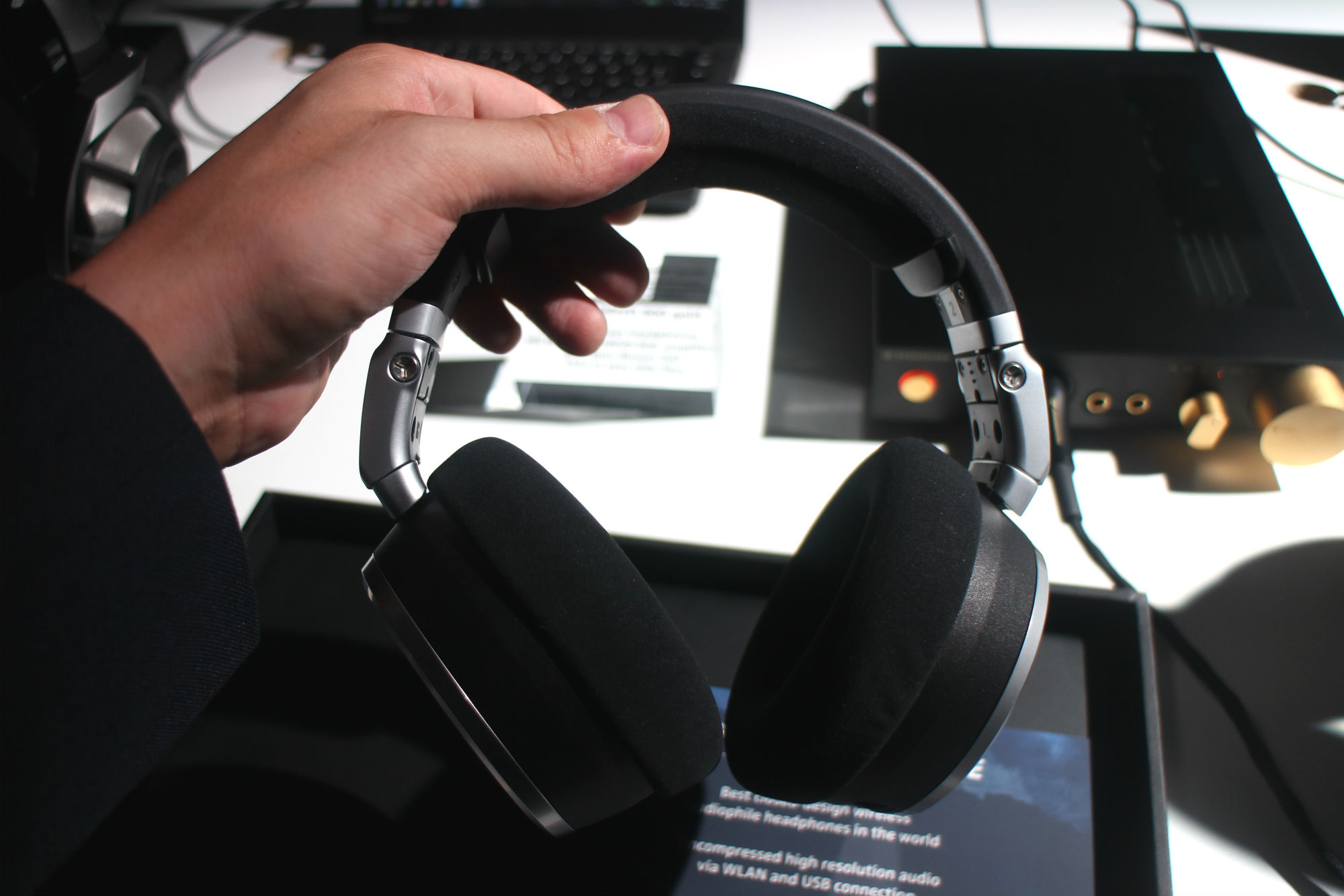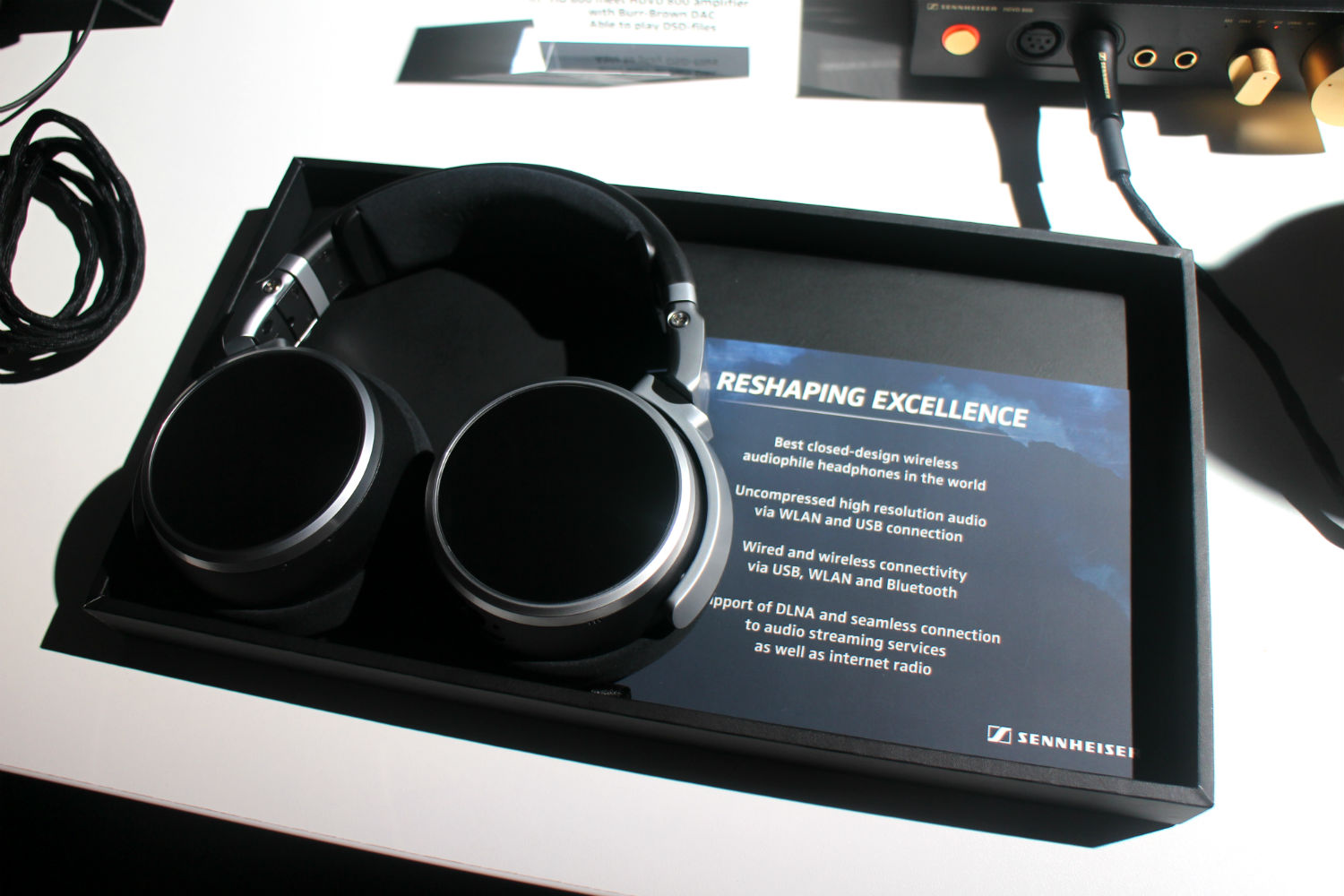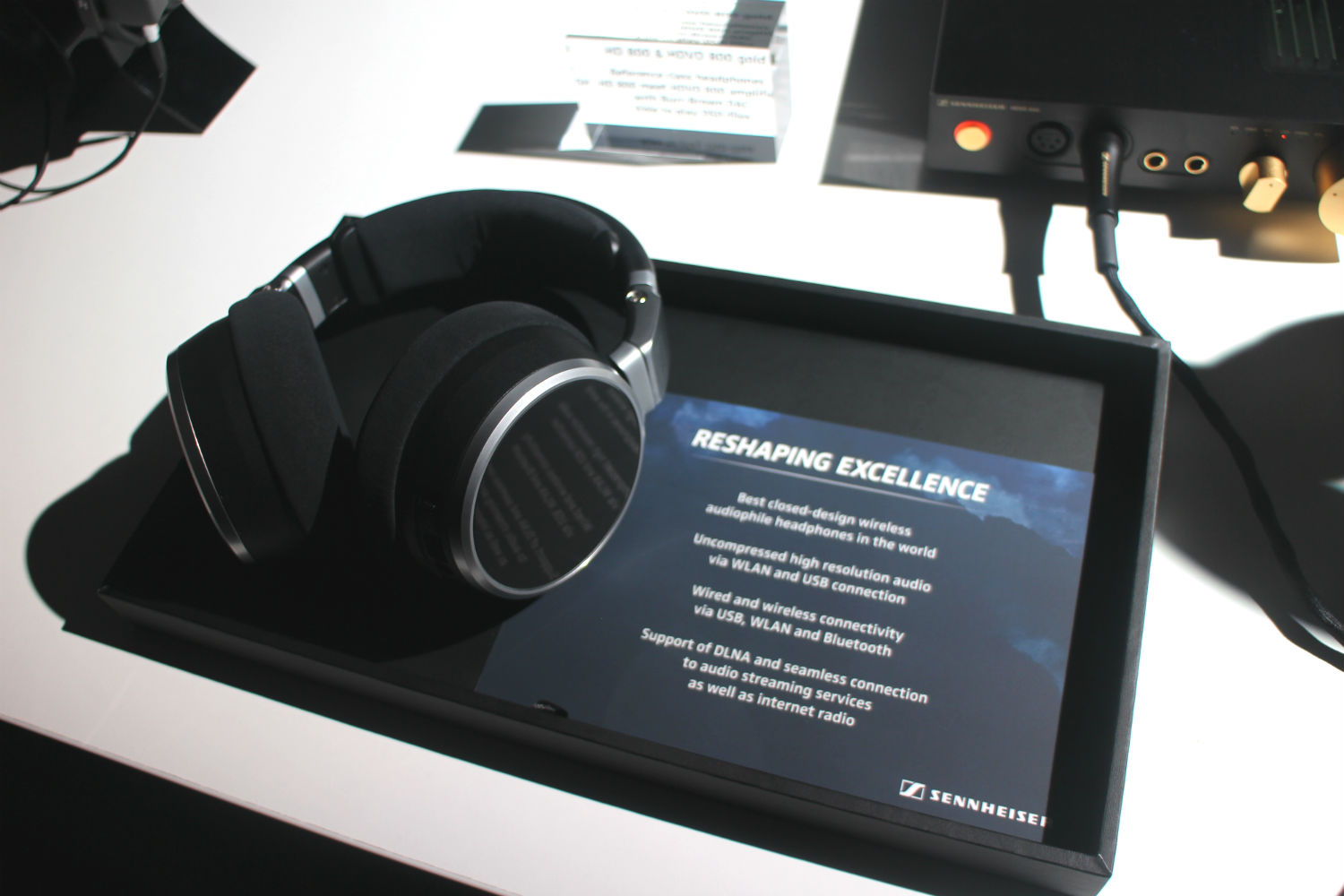Showered in bright beams of silver-white light, Dr. Andreas and Daniel Sennheiser (grandsons of company founder Dr. Fritz Sennheiser), revealed the next big thing for the brand: a mysterious pair of headphones in a sleek black box atop a base of Carrara marble. They don’t have a name, they don’t have a price, and no one outside of a small handful of Sennheiser elite has heard them — yet.
The headphones are the crown jewel of Sennheiser’s 70th anniversary event, celebrated at a decadent showcase in London’s Central Westminster Hall that concluded with a concert by none other than English singer-songwriter and composer, Imogen Heap, along with the Junge Deutsche Philharmonie orchestra. The concert was recorded in a new 9.1-channel audio format Sennheiser has been developing, known for now only as Sennheiser 3D (more on that to follow).
Proving just how important Sennheiser sees the enigmatic new headphones are to the brand, the company flew out several journalists from across the globe for the unveiling, all of us landing in London with about as much information as a black ops commando on the heels of a self-destructing message.
What little we do know about the new cans is that they boast 2.4 micrometer platinum-vaporized diaphragms, which are said to be capable of reaching a frequency response of a whopping 8Hz-100kHz, which, as Dr. Andreas Sennheiser puts it, is “hearable only by an elephant and a bat combined.” As Sennheiser reminds us, the Carrara marble used for the base is the same kind used by Michelangelo, designed to offer an “unshakable foundation for the ultimate sound.” The new cans are large, they are open-back, and although they don’t yet have a price, they are, no doubt, extremely expensive.
Our only glimpse of the headphones came when one of Sennheiser’s engineers flicked a switch at the back of the base, which triggered an automatic door on the black case atop the stand to reveal the
From what we could tell in our teaser glimpse, the headphones themselves aren’t too dissimilar in aesthetic design to Sennheiser’s prized HD800 audiophile
With so little to go on, rumors ran rampant through the concert hall about the new offering. Guesses were levied about the price, with one journalist claiming the all-in-one system was said to cost as much as $50,000, though at this point that’s nothing more than speculation. What is abundantly clear, however, is that the system, with its marble base and self-opening appendages, has been developed for audiophiles, and stands far outside the realm of standard consumer cans.
Moving back into the consumer world, Sennheiser also unveiled a nameless set of hi-res Wi-Fi headphones at the event, which we were able to listen to for a brief time. Sourcing lossless audio files, the
While we walked away from the showcase nearly as perplexed about the headphones as we’d been before our arrival in London, if Sennheiser’s goal was to seduce us with intrigue and leave us wanting more, the mission was handily accomplished. More details about the mysterioso new





